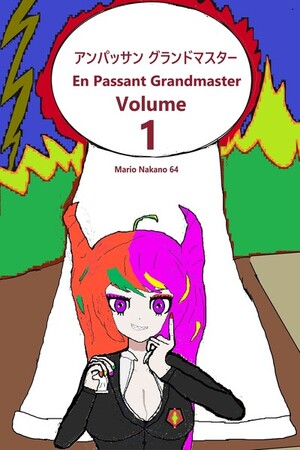Chapter 9:
Vol. 3 Theory of Friendship
Daily Life of a loner
What is friendship? Is it a bond? Is it a relationship? Is it real? Is it something everyone needs? If you don't know, let me explain. I will try to put it as simply as I can.
Think of human beings as atoms. What is an atom made of? An atom has electrons, protons, and neutrons, each with a negative, positive, and no charge, respectively. Let's say that electrons are negative thoughts, protons are positive thoughts, and neutrons are just dead weight that doesn't affect our lives. In an atom, protons and neutrons are at the center, while electrons revolve around them. Do you understand what that means? Positive and neutral thoughts are something that humans don't want to share, so they keep them deep inside. Meanwhile, all the negative thoughts are moving freely. Are you with me? I think I'm clear so far.
This is all just a basic foundation for understanding friendship. Up to this point, I've defined what an atom is—in other words, what a human is. Now, imagine there are countless atoms around you. Some are big, some are small; they all have different sizes. We all know that two or more atoms react to form a compound. For example, to make water, two hydrogen atoms and one oxygen atom react with each other to form H2O. What makes these atoms react? (Remember, atoms equal humans.) What makes atoms react are electrons—in other words, negative emotions. Atoms share electrons to form a bond between them so that both atoms can be stabilized and form a compound. This compound is the so-called friendship. Everyone has something that connects them with others.
If you still don't get it, let me explain it more simply. Imagine you're having a hard time dealing with a problem yourself. A person comes and lends you a hand. When you're with that person, you feel at ease. Do you understand it now? If not, I don't know how else to explain it.
Not every atom can react with each other.
For those who don't know these concepts, electronegative atoms can hold a negative charge more efficiently, while electropositive atoms can hold a positive charge.
Moving forward, what determines the strength of these bonds? All atoms are not the same; some have more electrons, while others have fewer. When they share these electrons, it creates a bond between them. The strength of these bonds depends on what type of atom they are. If they are electronegative, they can make bonds with electropositive atoms easily, and vice-versa.
Here comes the fun part: Why do some friendships break? Imagine two atoms are in a bond—one is electronegative, while the other is electropositive. Then, a third atom enters, which doesn't have a bond with the other two, but it is more electronegative than the atom currently in the bond. So, the electropositive atom will try to form a bond with the more electronegative atom. While it is doing that, the bond with the previous atom will weaken and eventually break. That's how a bond between two atoms is broken.
If you consider atoms as humans, then electropositive atoms are those who can't deal with their problems, while electronegative atoms are those who lend them a hand.
I taught you two theories today: the Bohr model of an atom and molecular orbital theory. I think I should become a chemistry teacher. (Lol)
(Extra Knowledge...
The question is: Where do we loners stand? Have you ever heard of inert gases/atoms? They don't react with other atoms, not even among themselves. We come into this category. Like every part of chemistry has exceptions, here is one, too. Some atoms are so electronegative or electropositive that they even force an inert gas/atom to react with them. In other words, they force a loner to be their friend. Ridiculous, right? You all must be wondering what neutrons are. Just so you know, they are the knowledge we have—the things we learn every day. It can be related to your studies, your work, your hobbies, etc. That means it's neither negative nor positive.)
Ps
What a funny thing I wrote



Please sign in to leave a comment.